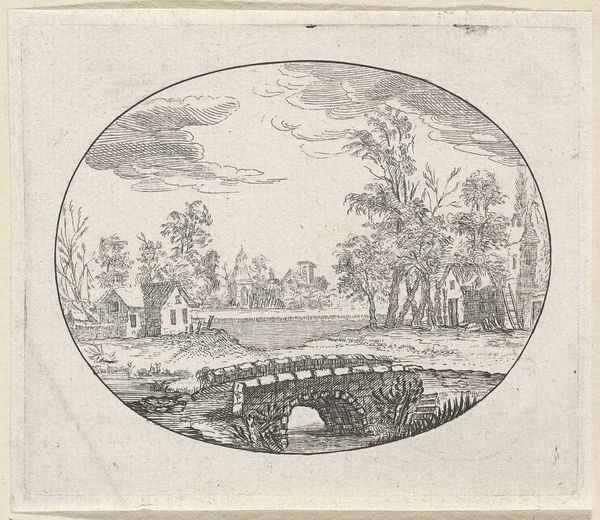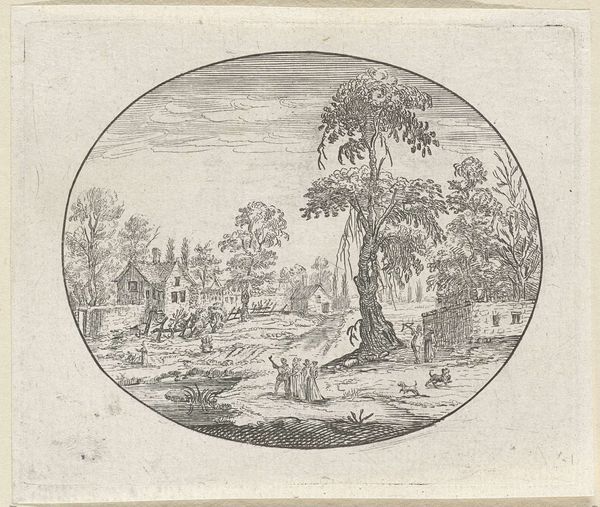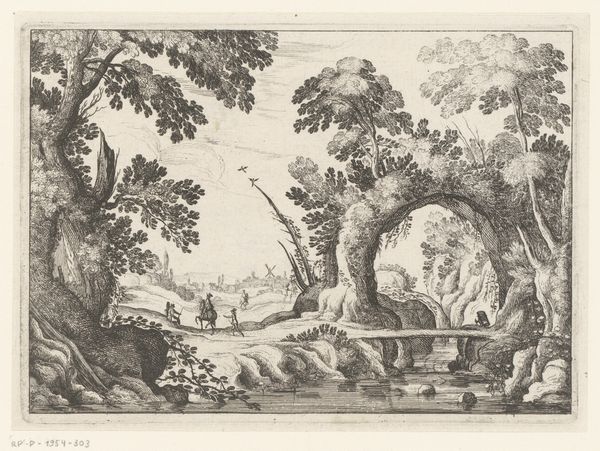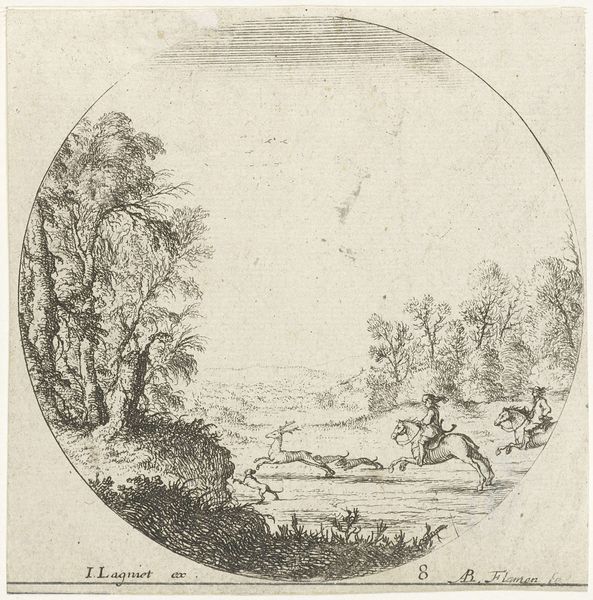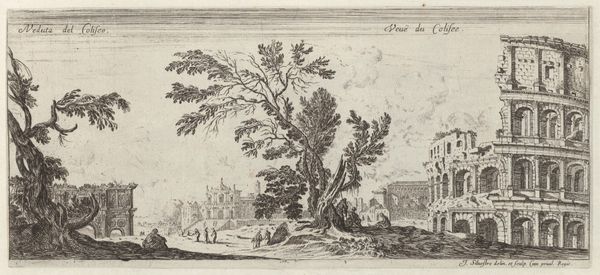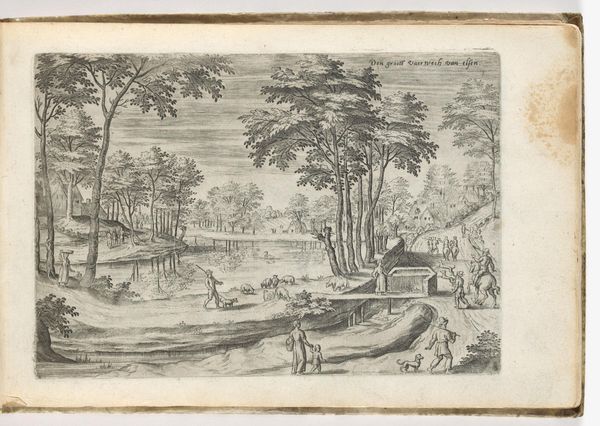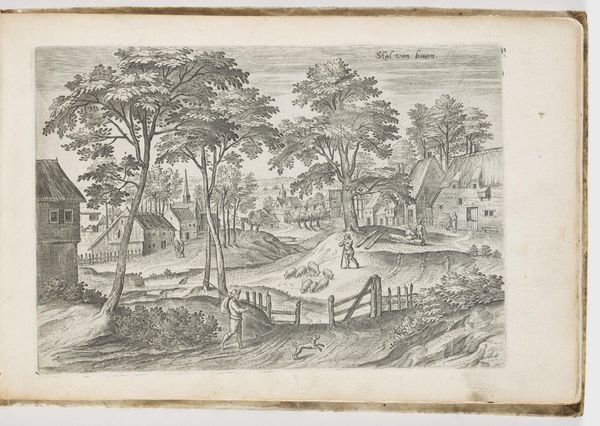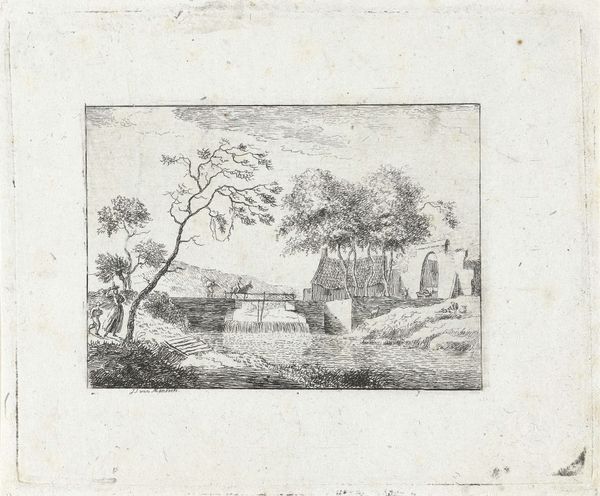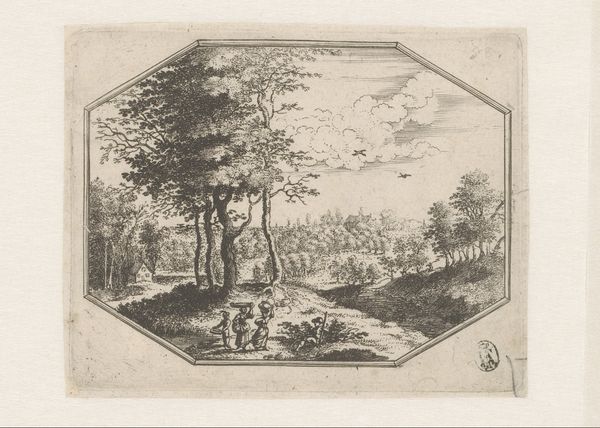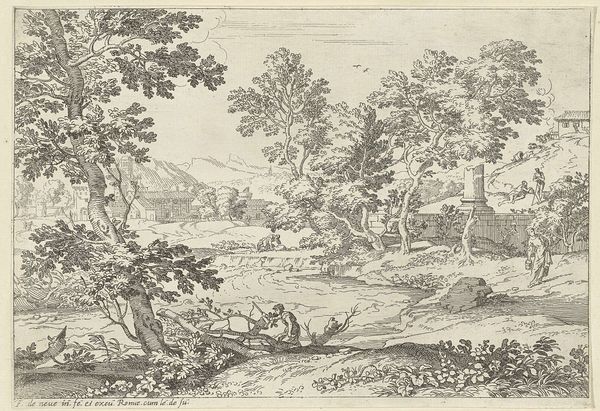
drawing, print, etching
#
drawing
#
dutch-golden-age
# print
#
etching
#
landscape
Dimensions: height 74 mm, width 88 mm
Copyright: Rijks Museum: Open Domain
This etching, Figuren bij een boerderij, which translates to Figures at a Farm, was created by Charles de Hooch in the 17th century, a period marked by significant social and economic changes in the Netherlands. Hooch’s pastoral scene invites us to consider the lives of rural populations, often marginalized in dominant narratives. The figures, rendered with delicate lines, seem dwarfed by the landscape, suggesting their dependence on and connection to the land. This resonates with the period's complex relationship between urban centers and agricultural communities. Consider how the etching reflects the romanticization, or perhaps the idealization, of rural life during a time of increasing urbanization. Look closely at the details of the farm structures and the postures of the figures. What stories do they tell about labor, community, and the everyday experiences of people living in the Dutch countryside? How does Hooch, as an artist, position himself in relation to his subjects, and what does this tell us about the social hierarchies of the time? By engaging with these questions, we can begin to understand the significance of this etching not just as a landscape, but as a reflection on the human condition within a specific historical and cultural context.
Comments
No comments
Be the first to comment and join the conversation on the ultimate creative platform.
